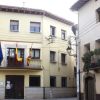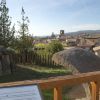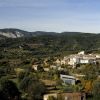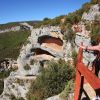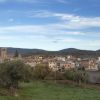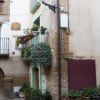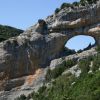The inhabitants of Asque and Colungo, two small villages that belong to the same municipal council, have traditionally communicated via the Devil’s Bridge, which occupies a spectacular location in the Fornocal canyon.
Colungo is the ideal starting point for excursions and is within easy reach of the bridges that cross the Palomeras and Gargantas Canyons. It is also the perfect viewing point from which to gaze down into the depths of the Fornocal Canyon.A number of historic ancestral houses from the 16th, 17th and 18th centuries can be seen on a stroll through the village centre, including Casa Notario, Casa Broto y Casa Avellanas.
As in many other locations across Somontano, wine that was too acidic to drink was traditionally distilled to make spirit. This tradition has continued and liqueurs are now commercially produced with a range of flavours that include coffee, tea, wild fruit, grape and, the most popular of all, aniseed. This last liqueur in particular has brought fame to village of Colungo. In a place known as the Demba de Nadal on the outskirts of the village there is a magnificent millennial olive tree that locals say was planted by “the Moors.” Despite its age, its owner reaps a fine harvest of olives every year.
The Cave Art Visitor Centre is the perfect departure point for a thrilling journey back in time, experiencing pre-historic life in the Alto Aragon region through the cave paintings of the River Vero Cultural Park.



